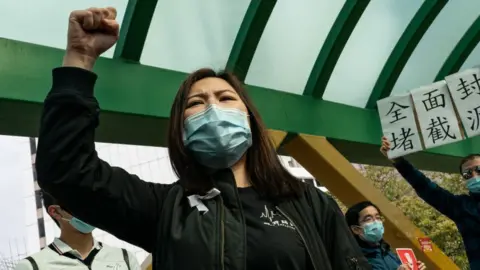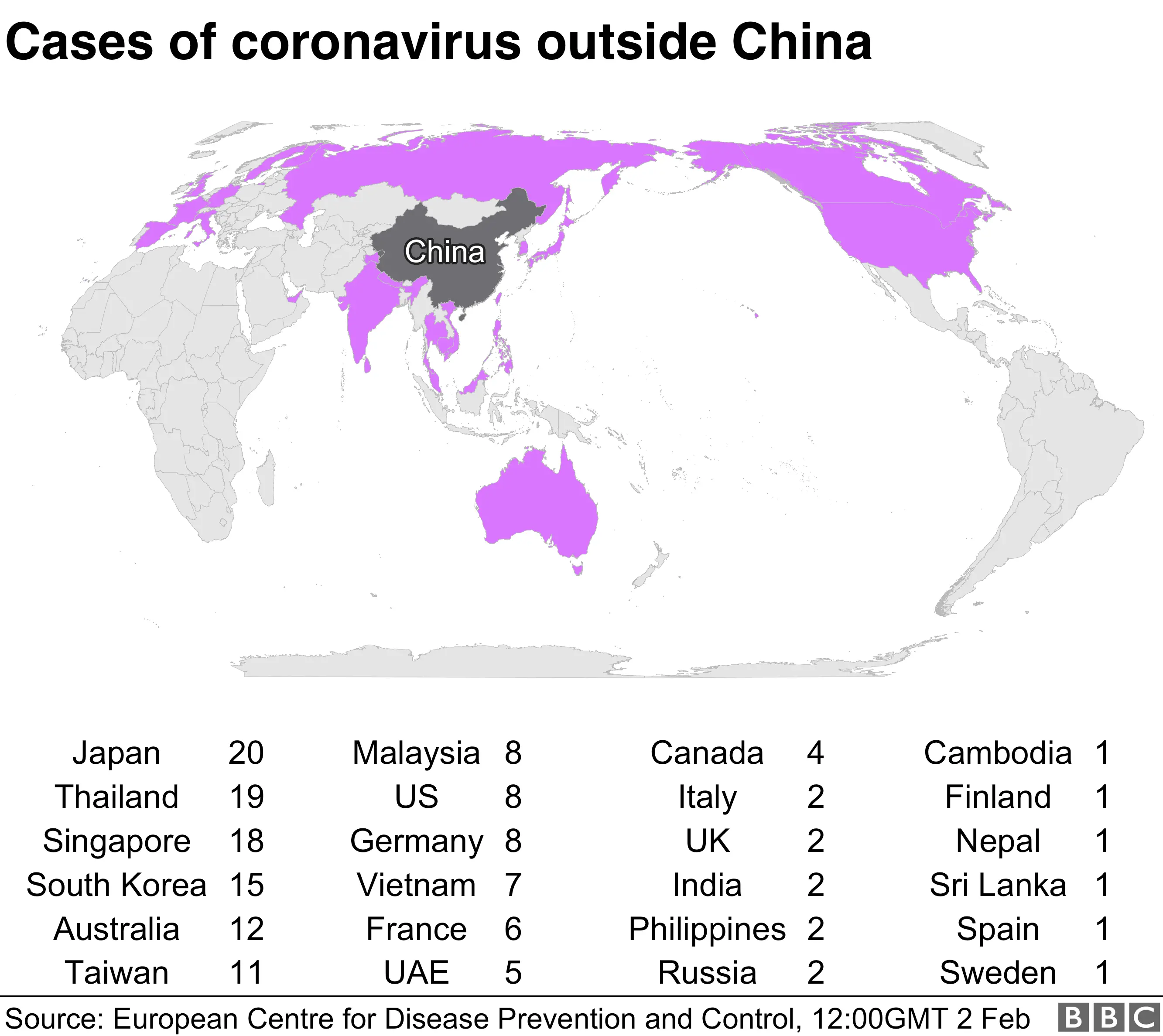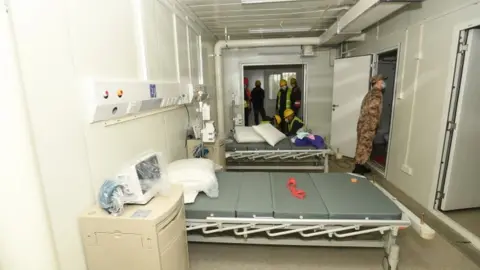Coronavirus: Hong Kong hospital staff strike to demand closure of China border
 Getty Images
Getty ImagesHundreds of hospital workers in Hong Kong have gone on strike, demanding the border with mainland China be completely closed to reduce the risk of the coronavirus spreading.
Hong Kong has suspended cross-border rail and ferry services, but health workers want a total border closure.
Authorities say closing the border completely would go against advice from the World Health Organization.
There have been 15 confirmed cases of the virus in the city.
"If there is no full border closure, there won't be enough manpower, protective equipment, or isolation rooms, to combat the outbreak," Winnie Yu, chairwoman of the newly-formed Hospital Authority Employees Alliance said.
Hundreds of "non-essential" medical workers went on strike on Monday. The union said frontline workers - including doctors and nurses - would follow on Tuesday if their demands were not met.
Hong Kong - which has a population of seven million - is part of China but retains significant autonomy. The border functions in much the same way as a normal international checkpoint.
As well as transportation closures, China has also stopped issuing visas for individual travellers to Hong Kong.
There have been more than 17,000 confirmed cases of the virus and 361 deaths in mainland China alone.
Outside China, there are more than 150 confirmed cases of the virus with one death, in the Philippines.
What are other countries doing to stem the outbreak?
Various countries have imposed travel restrictions to a varying degree.
- Denying entry to all foreign visitors who have recently been to China: US, Australia, Singapore
- Denying entry to foreigners travelling from mainland China: New Zealand, Israel
- Denying entry to foreigners who have visited Hubei province: Japan, South Korea
Other countries have seen their national carriers temporarily suspend all flights to mainland China. These include Egypt, Finland, Indonesia, the UK, and Italy amongst others.

Do the travel bans work?
Global health officials have advised against the bans.
"Travel restrictions can cause more harm than good by hindering info-sharing, medical supply chains and harming economies," the head of the WHO, Dr Tedros Adhanom Ghebreyesus, said on Friday.
The WHO recommends introducing screening at border crossings. It has warned that closing borders could accelerate the spread of the virus, with travellers entering countries unofficially.
China has criticised the wave of travel restrictions, accusing foreign governments of ignoring official advice.
What is the situation now in China?
A new hospital built in just eight days to treat people with the virus began taking patients on Monday.
Wuhan's 1,000-bed Huoshenshan Hospital is one of two dedicated facilities built to help tackle the outbreak.
A second hospital at Leishenshan is due to be finished on Wednesday.
 EPA
EPAHospitals in the province of Hubei - where Wuhan is located - are reportedly overwhelmed and struggling to treat the growing number of patients.
Latest figures from China's National Health Commission on Monday revealed:
- 21,558 suspected cases of the virus
- 152,700 people "under medical watch"
- 475 people discharged from hospital
The number of coronavirus cases worldwide has overtaken that of the similar Sars epidemic, which spread to more than two dozen countries in 2003.
But the mortality rate of the new virus is much lower, suggesting it is not as deadly.
What's it like in hospitals in Hubei?
Hospitals in the province are reportedly understaffed and overburdened, as the number of infections rises sharply.
According to the Washington Post, some hospital workers have begun wearing nappies because they don't have time to use the bathroom.
Hospitals are also dealing with a shortage of medical supplies. The Wuhan Children's Hospital posted on social media: "Medical supplies are in short supply - help!"
Videos on social media showed long queues outside hospitals.
In one video, a man with a Wuhan accent at a local hospital said it could take "as long as 10 hours" for patients to be seen by a doctor.
How deadly is the virus?
More than 75,000 people may have been infected in the city of Wuhan, which is at the epicentre of the outbreak, experts say.
But estimates by the University of Hong Kong suggest the total number of cases could be far higher than the official figures.
A report on the early stages of the outbreak by the Lancet medical journal said most patients who died from the virus had pre-existing conditions.
The report found that, of the first 99 patients treated at the Jinyintan Hospital in Wuhan, 40 had a weak heart or damaged blood vessels. A further 12 had diabetes.
The virus causes severe acute respiratory infection and symptoms seem to start with a fever, followed by a dry cough.
But most people infected are likely to fully recover - just as they would from a normal flu.
An expert at China's National Health Commission (NHC) said that one week was sufficient for a recovery from mild coronavirus symptoms.

Do you have any information to share? Get in touch by emailing [email protected].
Please include a contact number if you are willing to speak to a BBC journalist. You can also contact us in the following ways:
- WhatsApp: +44 7756 165803
- Tweet: @BBC_HaveYourSay
- Send pictures/video to [email protected]
- Upload your pictures / video here
- Please read our terms & conditions and privacy policy
